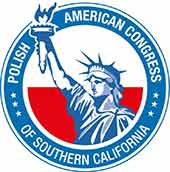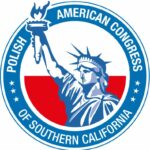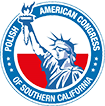Polish Independence Day is celebrated on November 11 — the same date as Veterans Day in the United States. This shared date is not accidental. For both nations, November 11 symbolizes the end of World War I and the beginning of profound political change. In Poland, it marks the restoration of sovereignty in 1918 after 123 years of partitions under the Austrian, German, and Russian Empires. In the United States, it commemorates the Armistice of 1918, which ended fighting on the Western Front.
Poland’s rebirth is closely linked to the victory of the Allied Powers, including the United States. A turning point came with President Woodrow Wilson’s speech to Congress on January 8, 1918, known as the “Fourteen Points.” His program outlined a new vision for peace in Europe and Point Thirteen called for the creation of an independent Polish state with a secure access to the sea and internationally guaranteed borders. Poland was the only nation mentioned by name — a powerful gesture that elevated the Polish cause before the world.
Wilson’s support stemmed from his belief that restoring historic nations would create a more stable Europe. It was also influenced by the large Polish American community — around 3 to 4 million people — who actively lobbied through organizations such as the Polish National Alliance and the Polish Falcons. A key intermediary was Ignacy Jan Paderewski, the world-renowned pianist and statesman, whose 1917 meeting with Wilson helped convince the President to include Poland in his peace program.
More than 20,000 Americans of Polish descent served in U.S. forces during World War I, while thousands more volunteered for the Blue Army (Haller’s Army) in France, fighting under Allied command. At the 1919 Paris Peace Conference, the U.S. delegation strongly advocated for Poland’s restoration. Soon after independence was achieved, Poland established one of its earliest embassies in Washington, D.C., reflecting the importance of relations with the United States.
Veterans Day — originally Armistice Day — was created to honor those who served in World War I. After World War II and the Korean War, it was broadened to recognize all American veterans. During the 1920s and 1930s, the Polish American community played an active role in commemorating November 11. Polish parishes held memorial Masses for American soldiers who had fallen overseas. Organizations such as the Polish National Alliance and the Polish Falcons observed the date as both Armistice Day and Polish Independence Day. Polish orchestras performed concerts in tribute to American World War I veterans.
One of the most significant gestures of gratitude came from Paderewski. Archival sources confirm that he performed at the White House for President Wilson, playing Chopin’s “Heroic” Polonaise and an improvised piece dedicated to the President. The following day, he visited Arlington National Cemetery, where he laid flowers at the Tomb of the Unknown Soldier in honor of American war dead — a gesture widely reported as a symbol of Poland’s appreciation for America’s support.
The shared history of World War I forged a lasting bond between Poland and the United States. Today, November 11 remains a powerful reminder of the intertwined stories of freedom, sacrifice, and friendship — shaped by Wilson’s diplomacy, Paderewski’s efforts, and the contributions of millions of Polish Americans.





